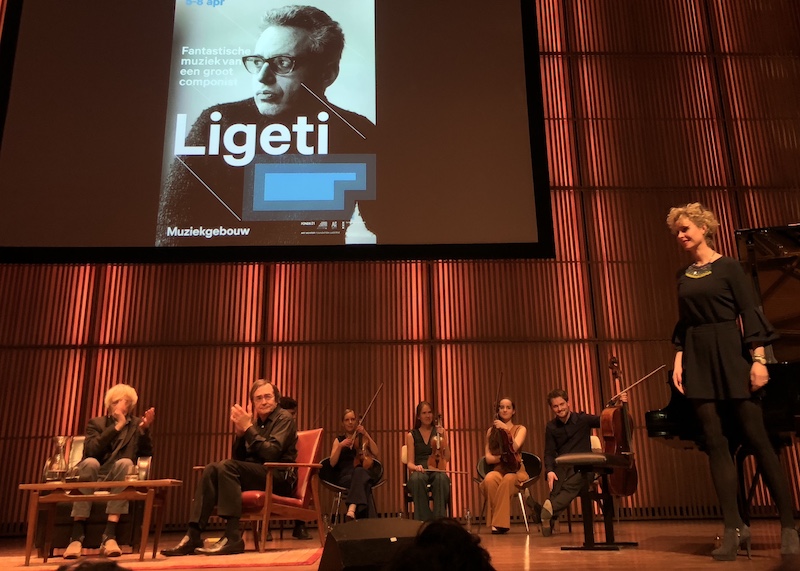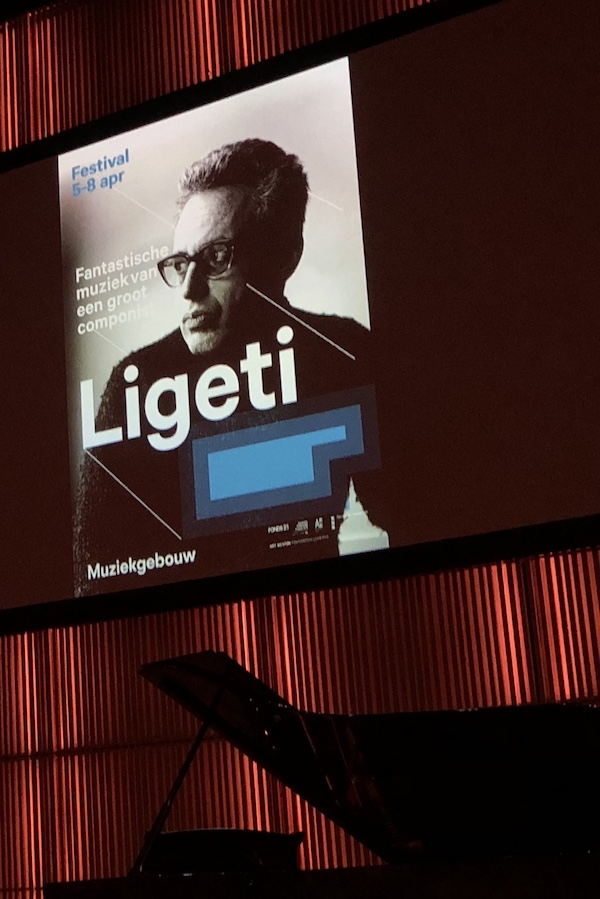
No rhythm, no melody, no pitch, only the tone color. Temperament and a great virtuosity. Freedom and self-will as important values. György Ligeti urged musicians to play beyond their limits (‘Nein! Mehr!’). This is a short typification of this extraordinary Hungarian composer.
Maybe you heard Ligeti’s music in Stanley Kubrick’s The Shining (‘Lontano’) or in A Space Odessey (‘Requiem’).
Reinbert de Leeuw ever introduced me to contemporary serious music: to Shostakovich (Jewish songs), Ives (the silence in music), Antheil (the pistol to make people pay attention to his music), Andriessen (a bass guitar in a ‘classical’ ensemble), Messiaen (birdsongs), Ustvolstkaya (self-will) and yesterday to the Hungarian composer György Ligeti (virtuosity beyond limits). Together with the Dudok Quartet Amsterdam and the pianist Pierre-Laurent Aimard. Maartje Stokkers superbly facilited this warming up of the Ligeti Festival, a nice mix of music and interviews. I’ll give you a short introduction to Ligeti’s live and music.

I recognize what Reinbert de Leeuw decribes. A few years ago I made the documentary ‘A Life in Hungary‘ with my Hungarian friends. The documentary is about the life of an 92 years old Hungarian woman and how she dealt with the severe system changes in Hungary. She always stayed with herself and was independent in these hard times.
In 1944, Ligeti’s education was interrupted when he was sent to a forced labor brigade by the Horthy regime. His brother, age 16, was deported to a concentration camp and both of his parents were sent to Auschwitz. His mother was the only other survivor of his immediate family.
Ligeti had his musical education at the Franz Liszt Academy of Music in Budapest. Bartók was forbidden by the authorities of Communist Hungary. Ligeti said he composed musical pieces for the drawer.
Waiting for the musicians to come

In 1973 Ligeti became professor of composition at the Hamburg Hochschule für Musik und Theater, eventually retiring in 1989.
Like Chopin, Liszt and also Debussy Ligeti changed the piano. ‘There is a piano before, and a piano after Ligeti’ Reinbert de Leeuw told us yesterday. Pierre-Laurent Aimard played three etudes yesterday. Probably the most difficult études for piano. Listen to The Devil’s Staircase (étude no. 13). Amazing!
The Car Horn Symphony. Asko/Schönberg Ensemble and Slagwerk Den Haag will perform this musical piece on April 5 2018.
But after all Ligeti’s music is virtuoso and so very vivid. In the warming up session the violin player Joseph Puglia opened the Ligeti warming up for the festival. View a part of the violin concerto with Joseph Puglia and Reinbert de Leeuw commenting on it.
Violin Concerto by Joseph Puglia and Reinbert de Leeuw.
—————————————–
- Interview with Reinbert de Leeuw (in Dutch)
- Information about Ligeti Festival
- Info about my documentary ‘A Life in Hungary‘
0 reacties